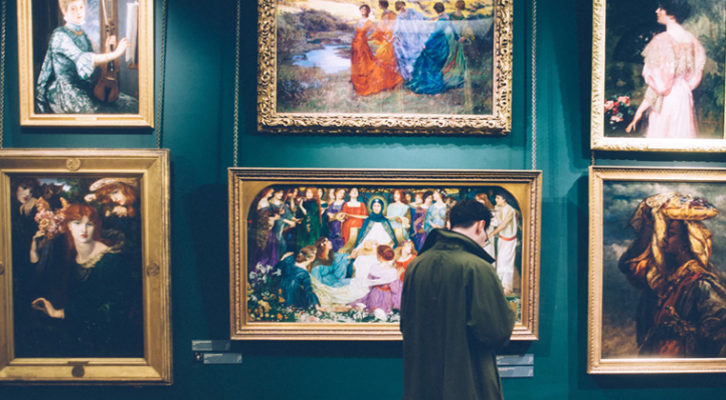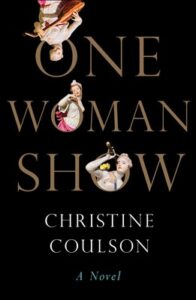
Beyond Words: On the Story Within a Single Painting
Christine Coulson Considers Finding Inspiration in Museum Wall Labels
Years before I wrote labels for The Metropolitan Museum of Art—you know, those dry little descriptions that people dutifully read as they walk around looking at art—I was asked by the then director to survey all the labels in the museum’s 462 galleries. One of my favorites was written to accompany this tender portrait of Federico Gonzaga painted in 1510 by the Italian artist Francesco Francia.

The label reads:
The great Renaissance collector Isabella d’Este, marchioness of Mantua, commissioned this charming portrait of her son Federico Gonzaga to console her when he was taken to the papal court in Rome as hostage. It was painted by Francia as the young heir passed through Bologna, and was so admired that Isabella had to reclaim it from some papal courtiers. Federico’s black hat and gold-embroidered gown were much in vogue, and his gaze is exceptionally sweet for a fifteenth-century portrait. Soon after Isabella finally received the portrait she gave it away in response to an unexpected gift from a gentleman in Ferrara who had sent her a magnificent book of sonnets.
Wait. A hostage? This boy had his portrait painted as he passed through Bologna when he was taken hostage? Maybe by the Pope?? Then his mother gave it away??? Because of an unexpected gift from a guy in Ferrara who sent her a book of sonnets? Sorry, a magnificent book of sonnets. I am the mother of sons and find the giving-the-portrait-away part particularly perplexing.
I recently wrote a novel composed almost entirely of museum wall labels, but this example is a whole novel in one label. Or a riveting treatment for an early 16th-century Netflix series. Claire Danes would play the erratic mom.
I wrote for The Metropolitan Museum of Art for 25 years, and my final job as Senior Writer was to craft the wall labels for the new British Galleries. To write those small texts, I collaborated with the curators in the Department of European Sculpture and Decorative Art—patient, wise, formidable, nearly omniscient in their understanding of the art in their care. In addition to the “tombstone” information (those three lines at the top of a label that tell you the artist, title, medium, date, etc.), I was allowed 75 words to discuss each work of art and 200 words to explain each of the four centuries covered by the galleries. I loved the challenge. No word could be wasted. But I also knew that the form was inherently flawed.
I was asking curators who knew almost everything there is to know about an object to choose a single story to share. If I was writing about a silver teapot, the label could be about the maker, the owner, the silver, the innovative Rococo form, tea in 18th century London, tea’s relationship to the slave trade, the influence of silver teapots on middle class consumption. I could write about any of those subjects, but I could not write about all of those subjects.
Museums are for looking, and your individual response to a work of art holds all the magic.
The best labels read as if you are having a conversation with a curator generously pointing to details worth looking at: a strikingly modern hand gesture on an ancient sculpture, agony rendered by a cluster of brushstrokes on the surface of a painting, the tension between material and form in a buoyant bronze sculpture. But you can also find those elements on your own, guided by your own eyes, experiences, and feelings. You don’t need to know anything.
Museums are for looking, and your individual response to a work of art holds all the magic. Arguments will always spin and shift around art and its meaning, but the object itself remains constant. However, looking is a muscle that you have to develop. I often tell people to go to The Met and just wander around until something stops you—it doesn’t matter what it is. Then spend fifteen minutes looking at it (that’s a long time to look at a work of art; you’ll be amazed at what you start to see).
Look at the surface and the edges, think about the material, and consider the choices that were made about what to emphasize and what to leave out (labels are not the only places where editorial decisions are made). Look. And keep looking. And look some more. Look until you find a novel all on your own. Or a Netflix series starring Claire Danes. Trust me, it’s there. And everything you need to discover it is inside you. Let your point of view be your guide rather than someone else’s.
And then, most importantly…leave. Walk out of the museum and that object will stay with you. It’s yours. Whether or not you return to the museum, that connection will remain. If you do return to that work of art, you and the world will have changed, and a fresh relationship will emerge. Look. Leave. Repeat.
I rarely read labels. There is much greater joy in simply beholding something, soaking in the visual elements that connect me to the work of another human being—sometimes across millennia. When I look at that painting of Federico Gonzaga painted over 500 years ago I see thin layers of paint suffused with a soft glow of pink not only on his cheeks, but on the sides of his nostrils and on his translucent eyelids—the flushed skin of any child.
I love the bright highlight on the curl of his upper lip and along the rippled collar of his white shirt, that strand of hair on the left of his face that bends differently than the others, the gentle shadow at the center of his chin, and the exquisite pearl resting against the black velvet of his tunic, its luminesce echoing the radiance of his skin.
In the background, I notice the two figures standing in the water at the foot of the hill in the background, the distant towers on the right that mirror the mountain slope on the left, the delicately rendered leaves—each one a miniature drop of paint—that texture the trees as if they are in bloom, and the mottled stone of the parapet in the foreground. Mostly, I linger on the perfectly positioned pinky extending from the pudge of the boy’s youthful hand, an absentminded gesture so singular it feels like his alone.
These observations allow me to know this boy, to imagine him. I could see him on the subway tomorrow and immediately recognize those puppy eyes and that gloriously flexed pinky. I would feel the same sense of wonder at his dimpled chin and that tinge of rose on his eyelids. I would feel the collapse of time between his world and my own. And I would, of course, casually ask about the hostage situation.

__________________________________

One Woman Show by Christine Coulson is available from Avid Reader Press, an imprint of Simon & Schuster. A version of this essay appeared in The Telegraph.
Christine Coulson
Christine Coulson spent twenty-five years writing for The Metropolitan Museum of Art and left as Senior Writer in 2019. Her debut novel about the museum, Metropolitan Stories, was a national bestseller and is followed by One Woman Show.



















